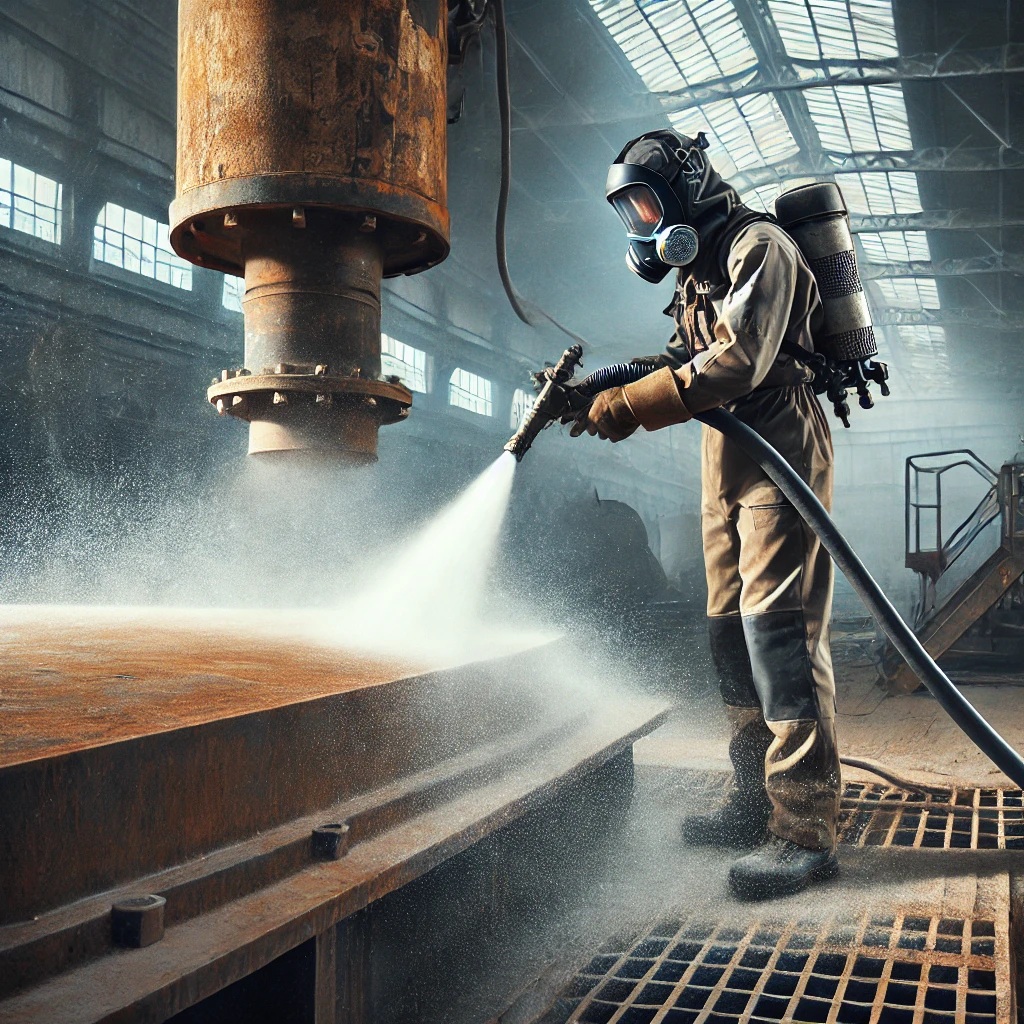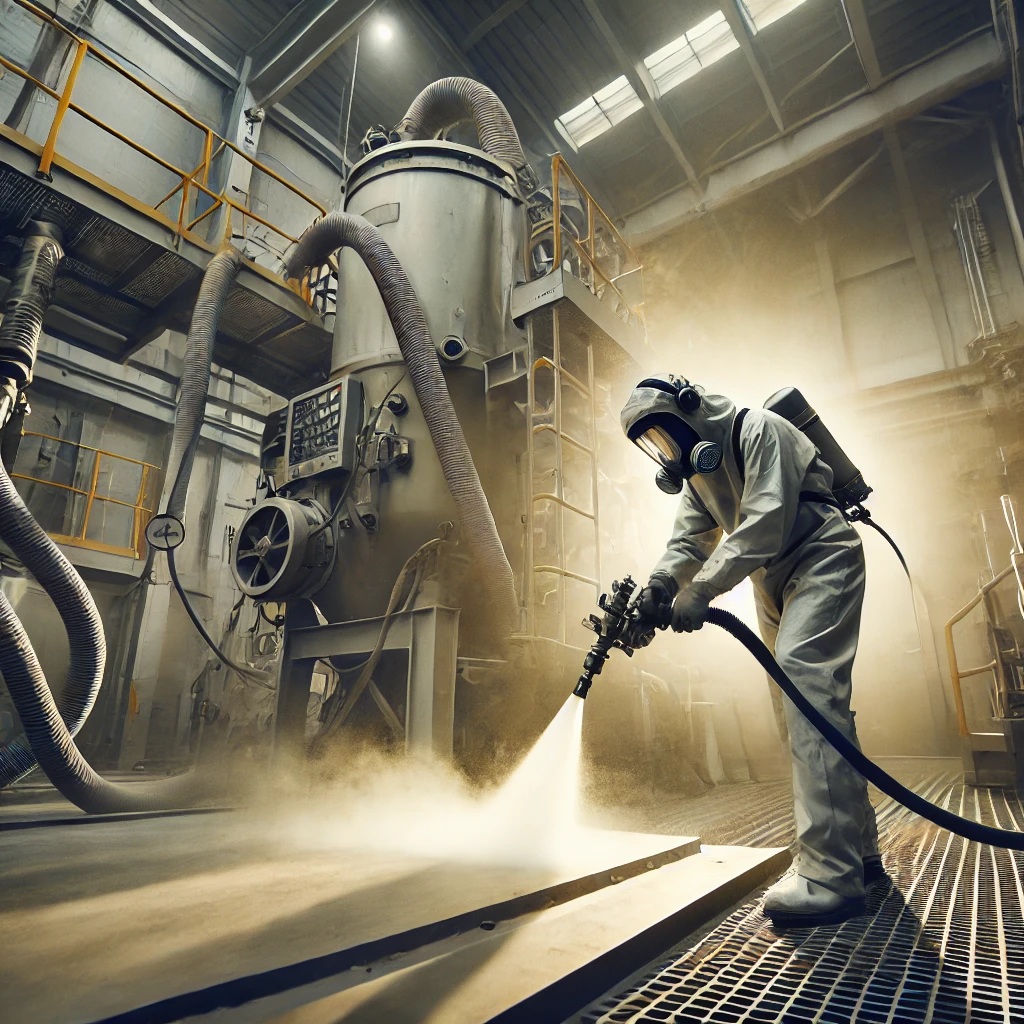Understanding Sandblasting
Sandblasting, also known as abrasive blasting, involves the process of forcibly propelling a stream of abrasive material against a surface under high pressure. This sandblasting method is used to smooth rough surfaces, roughen smooth surfaces, shape surfaces, or remove surface contaminants. Common abrasive materials include sand, glass beads, steel grit, and aluminum oxide.
Effectiveness of Sandblasting in Removing Rust
Rust, or iron oxide, forms when iron or its alloys are exposed to moisture and oxygen over time. Removing rust is crucial to prevent further corrosion and maintain the integrity of metal structures.
Advantages of Sandblasting for Rust Removal:
-
Efficiency: Sandblasting can quickly remove rust from large surface areas, saving time compared to manual methods.
-
Surface Preparation: It not only removes rust but also prepares the surface for painting or coating by creating a suitable profile for adhesion.
-
Versatility: Suitable for various metal surfaces, including steel, iron, and aluminum.
Considerations:
-
Surface Damage: If not done correctly, sandblasting can damage the underlying metal. It’s essential to choose the appropriate abrasive material and pressure settings.
-
Protective Measures: Post-sandblasting, applying a protective coating is recommended to prevent immediate re-rusting.
Effectiveness of Sandblasting in Removing Paint
Paint removal is often necessary for restoration, repainting, or maintenance purposes.
Advantages of Sandblasting for Paint Removal:
-
Thorough Cleaning: Capable of removing multiple layers of paint, including hard-to-reach areas.
-
Surface Preparation: Leaves the surface clean and roughened, ideal for new paint or coatings to adhere.
-
Time-Saving: Faster than manual scraping or chemical stripping methods.
Considerations:
-
Surface Type: Delicate surfaces may require gentler abrasives to prevent damage.
-
Environmental Concerns: Proper containment and disposal of paint particles are necessary to prevent environmental contamination.
Effectiveness of Sandblasting in Removing Graffiti
Graffiti removal is essential for aesthetic and property value reasons.
Advantages of Sandblasting for Graffiti Removal:
-
Effectiveness: Quickly removes graffiti from various surfaces, including brick, concrete, and metal.
-
Surface Preservation: When done correctly, it removes graffiti without damaging the underlying surface.
-
Eco-Friendly Options: Using environmentally friendly abrasives like baking soda or dry ice reduces environmental impact.
Considerations:
-
Surface Sensitivity: Historic or delicate surfaces may require specialized techniques to avoid damage.
-
Preventive Measures: Applying anti-graffiti coatings post-cleaning can make future graffiti removal easier.
Types of Sandblasting Techniques
-
Dry Sandblasting: Uses compressed air to propel abrasive materials. Suitable for heavy-duty cleaning but generates dust.
-
Wet Sandblasting: Combines water with abrasive materials to reduce dust and is gentler on surfaces.
-
Vacuum Sandblasting: Simultaneously blasts and collects abrasive materials and debris, minimizing mess.
-
Soda Blasting: Uses baking soda as the abrasive, ideal for delicate surfaces and environmentally friendly.
-
Bead Blasting: Utilizes glass beads for a smoother finish, suitable for polishing and cleaning without significant material removal.
Safety Precautions in Sandblasting
-
Personal Protective Equipment (PPE): Operators should wear appropriate PPE, including respirators, gloves, and protective clothing.
-
Containment: Proper containment systems should be in place to prevent the spread of dust and debris.
-
Training: Operators must be adequately trained to handle equipment and materials safely.
-
Environmental Regulations: Compliance with local environmental regulations is essential, especially concerning waste disposal.
Conclusion
Sandblasting is a powerful and efficient method for removing rust, paint, and graffiti from various surfaces. Its versatility and effectiveness make it a preferred choice in many industries. However, it’s crucial to select the appropriate technique and materials for each specific application to ensure safety and prevent damage. Consulting with professionals and adhering to safety guidelines will yield the best results.
Frequently Asked Questions (FAQs)
Q1: Can sandblasting damage the surface being cleaned?
Yes, if not performed correctly, sandblasting can damage surfaces, especially softer materials. It’s essential to choose the right abrasive and pressure settings.
Q2: Is sandblasting environmentally friendly?
Sandblasting can be environmentally friendly, especially when using eco-friendly abrasives like baking soda or dry ice. Proper containment and waste disposal further enhance its environmental safety.
Q3: How does wet sandblasting differ from dry sandblasting?
Wet sandblasting combines water with abrasive materials, reducing dust and being gentler on surfaces. Dry sandblasting uses compressed air and is more suitable for heavy-duty cleaning.
Q4: Can I perform sandblasting myself?
While DIY sandblasting is possible, it requires proper equipment, safety measures, and knowledge. For significant projects or delicate surfaces, hiring professionals is recommended.
Q5: How much does professional sandblasting cost?
Costs vary based on the project’s size, surface type, and location. It’s best to obtain quotes from local service providers for accurate pricing.


